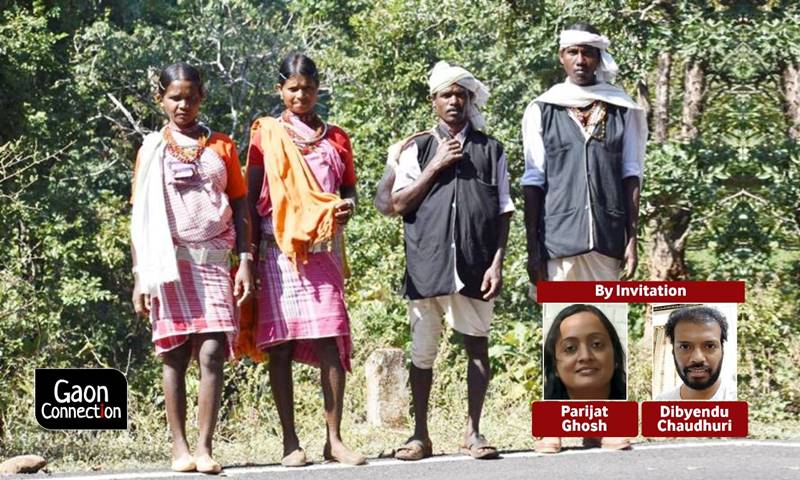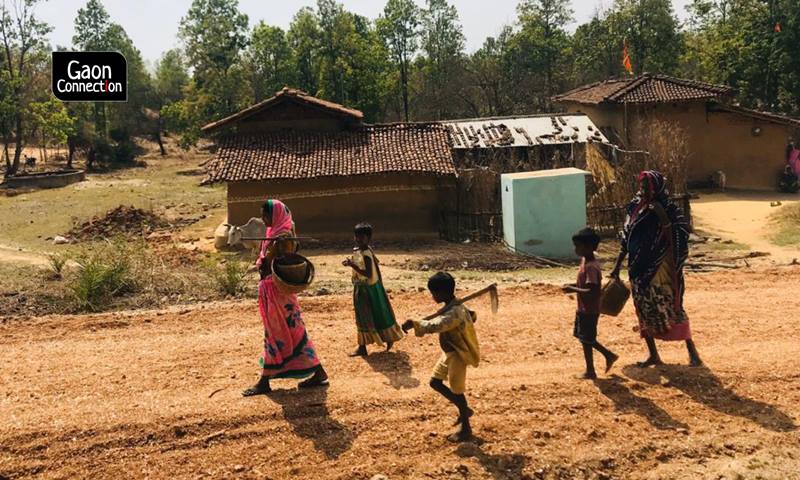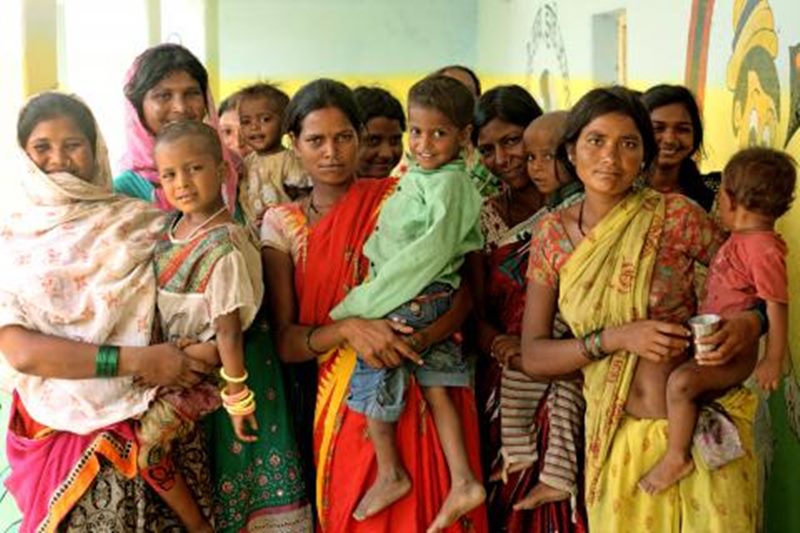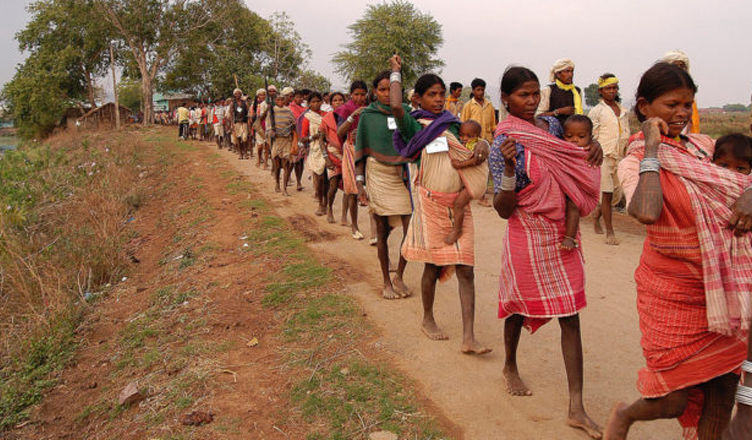Adivasis in the Central Indian Plateau most deprived; livelihoods tracking initiative can offer useful insights
The Central Indian Plateau is one of the poorest pockets in India and the Adivasi communities in this region are the most deprived in the country. A livelihoods tracking initiative has been initiated in Jharkhand and Odisha, and its report with important findings will be released next month.


The Adivasis believe in a symbiotic relationship with nature. They prefer cooperation and avoid competition. Community wellbeing is prioritised over individual progress.
Parijat Ghosh and Dibyendu Chaudhuri
With around 8.6 per cent (census 2011) of the country’s population, the scheduled tribe (ST) people constitute an important segment of India. A large non-tribal population hardly knows about these fellow citizens, although a section of the elite urban population is increasingly taking interest in their art and craft such as jewellery, accessories, etc.
The tribal communities were originally not part of the caste-based societies in this sub-continent. Throughout history, they have been subjected to displacement and dispossession for the sake of settled agriculture by the caste society, for forest and mineral resource extraction, dam construction, mineral-based factory establishment by various rulers, governments or private business houses.
Adivasi, tribe and STs
The term ‘tribe’ was first used by the British colonisers, who, from their experience of Africa and America, thought of these groups of people as kinship-based and in a stage of evolution. The term scheduled tribe has been defined in the Constitution of India as a group of people who are shy, remote, backward and with primitive traits.
The term ‘Adivasi’ got popular among this group of people when Jaipal Singh Munda, a member of the Constituent Assembly (and captain of the gold-winning Indian Hockey team in Amsterdam Olympic, 1928), claimed that the tribes are the original inhabitant of this sub-continent. It got further popularised during the Jharkhand and Chhattisgarh movement when tribal groups got mobilised to protest against displacement and dispossession claiming that they were not only dependent on the resources but had a right to their original homeland.

These claims of tribal communities may not be based on any historical evidence; however, these are symbolic manifestations of resistance against oppression in different forms throughout history, dispossession and displacement being the most inhumane ones among those.
This group of people are concentrated mostly in the north-eastern hills and central plateau; a small portion of them live in the north-western plains.
Also Read: For tribal communities of Nuapada in Odisha, it’s a long road to community forest resource rights
The tribes in the north-eastern hills speak languages belonging to the mostly Sino Tibetan (Bodo, Meitei, etc) family. Adivasis in the Central Indian Plateau speak languages of either Austroasiatic (Santhal, Munda, Ho, etc) or Dravidian (Gond, Oraon, etc) origin. Some tribes (Bhil, Garasia, etc.) in the western part speak in languages belonging to Indo-European family of which Hindi, Bengali, Odiya, Gujarati and other many North Indian languages are part of.

The terms tribe, Adivasi and ST are generally used interchangeably. However, those may not always be referring to the same group of people. The designation of a group of people as ST may vary from one state to another and depends on many socio-political factors. The Santhals in West Bengal and Jharkhand are designated as scheduled tribes whereas the Santhals in the Tea Estates of Assam are not considered ST. There are other similar examples.
Central Indian Plateau Adivasis most deprived
Adivasis of all the above three regions have different histories and cultures. And, they have their own issues and struggles too. The tribes of the Central Indian Plateau are particularly noticeable as they are one of the most deprived groups of people in India.
The Central Indian Plateau is known as one of the poorest pockets in India and is characterised by low life expectancy at birth, low literacy rate, very high infant mortality rate, very high incidence of poverty (below poverty line), etc. The soaring income gap in India is mostly due to the very low per capita income in this area. Data, wherever available, shows that Adivasis are the most deprived even within this region.
Also Read: Rs 60 for rolling 1000 beedis, and a horde of health problems for tribal women of Madhya Pradesh
Most of the Adivasis in the Central Indian Plateau are dependent on lands and forests for their livelihoods. Subsistence agriculture, a small amount of livestock rearing, non-timber forest product collection and wage are the major sources of their earning. There are groups of people, who, apart from the above, are involved in traditional artisan works such as bamboo craft or ironwork.

In a scenario of reduced access to forests, declining soil fertility, continuous fragmentation of lands, loss of lands due to industrialisation and mineral extraction these Adivasis are finding it difficult to sustain their life by being in the village for the entire year. Many migrate to distant cities in search of wage employment and stay there for some months to work in unorganised sectors such as construction. Some of them migrate for a longer duration and get hired by some middle-man or agencies to work in factories.
Also Read: Once rulers, the Paharia tribe in Jharkhand is struggling human trafficking, poverty, malnutrition
Many of our urban fellow citizens came to know about the existence of such a huge number of migrant workers, of which a significant portion is Adivasi, for the first time during the first nationwide lockdown last year when these workers tried to go back to their own villages by various means and faced unimaginable difficulties while returning home.
Adivasi Livelihoods
The Adivasis believe in a symbiotic relationship with nature. They prefer cooperation and avoid competition. Community wellbeing is prioritised over individual progress. All these, along with some taboos, influence their livelihood practices. The existing resource bases such as land, water and forest, and access and ownership to those, also determine the pattern of livelihoods.
There have been external interventions on these resources, for land husbandry or water body creation for irrigation on one hand and, and for construction of large dams or mines, on the other. These external interventions also influence the practice and outcomes of their livelihood. Besides, the households’ attributes such as education, health, knowledge, information, etc. drive their choices of livelihood activities, and their outcomes like food security, health, income, etc.
So, the livelihood canvas of Adivasis encompasses not only the activity or the income but also a whole bunch of other factors such as cultural ethos, skill-knowledge and other attributes of the household members and interventions on resources by external agencies.
The severe deprivation of Adivasi people in the Central Indian Plateau region is due to a combination of these factors that constitute the livelihood canvas of the Adivasis.
Also Read: Tribal districts report more land conflicts compared to other regions in the country
Gender in Adivasi societies
There are two kinds of understanding about how gender plays out within the Adivasi society. A section, mostly comprising of non-government organisations (NGOs) and feminist activists, thinks that women’s position in the Adivasi society is just like women’s position in non-Adivasi societies – they are oppressed in a similar manner.
Another section, mostly comprising of Adivasi scholars and activists claim that Adivasi women are more independent and comfortable within the Adivasi society as compared to the non-Adivasi women in the non-Adivasi societies. Reality probably lies somewhere in between.

All the Adivasi communities in central India are patriarchal, patrilocal, patrilineal and patronymic, however, women seem to be enjoying better status in terms of power and respect as compared to the non-Adivasi societies. There are challenges related to giving land rights to women, witch-hunting and other forms of gender-based violence. Distribution of the livelihood outcomes within the household remained an issue in Adivasi society too.
Since independence, government and non-government organisations have been working towards the well-being of Adivasis. However, dispossession and displacement continue to be major issues facing the Adivasis. Mainstream development programmes also fail to recognise the socio-cultural distinctiveness of this group.
Tribal development in India is based on a twin approach namely protection of their interests through legislative and administrative support and promotion of developmental efforts through plan schemes. Special assistance of around Rs 7,000 crore (Rs 70,000 million) is given to states/UTs annually to supplement their efforts in tribal development. A separate ministry — Ministry of Tribal Affairs — was set up in 1999 with the objective of providing a more focused approach to the integrated socio-economic development of the STs in a coordinated and planned manner.
However, there has been a lack of systematic effort to track the livelihoods of the Adivasis periodically. Such an exercise may help the administration and policymakers to design and implement schemes and programmes based on ground realities.
Also Read: Chhattisgarh govt revives Bodhghat dam project; Bastar’s tribal communities launch strong protests
Livelihoods tracking initiative
Professional Assistance for Development Action (PRADAN) is a non-profit working in the Central Indian Plateau, mostly with Adivasis and Dalits, for the last 38 years. PRADAN’s main focus has been to enable these communities by impacting their livelihoods. It is working to develop a process for periodically tracking livelihood outcomes of Adivasis in the region.
The livelihoods tracking initiative is aimed at creating a robust database that facilitates comparison between people belonging to STs and others living in the same agro-climatic regions, on aspects like their resource base, livelihood sources, income, food adequacy, nutrition, health situation and indebtedness, etc.
This year, the exercise of tracking livelihood outcomes has been initiated in Jharkhand and Odisha. The report is expected to be in the public domain next month by September 2021.
Ghosh and Chaudhuri work with PRADAN. Views are personal.

